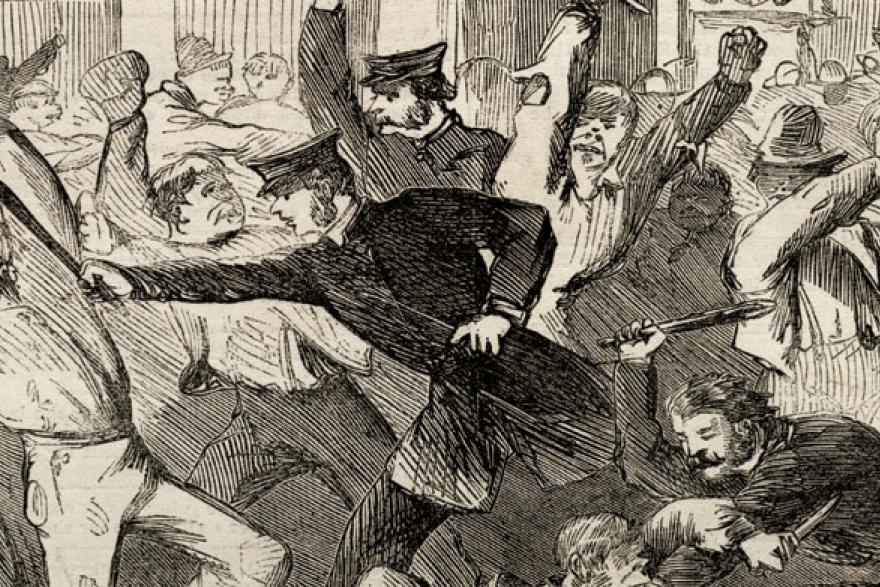Political and Civil Rights

Examine the range of New York City campaigns for civil and political rights across the political spectrum, from fighting for equal rights and protection under the law to advocating for civil liberties and protesting government regulation.
Case Studies:
Exhibition
Ongoing
Disability Rights
Activists have continued to mobilize for access to the city’s built environment, created resources to live independent visible lives, and formulated a proud disability identity. In the process, they made a more inclusive city for all, and helped expand thinking about the diversity of human bodies and minds.
Exhibition
Ongoing
Abolishing Slavery
After New York State abolished slavery in 1827, a small group of New York City abolitionists, such as David Ruggles and Abby Hopper Gibbons, continued to work for an end to slavery nationwide. Both black and white activists denounced New Yorkers who profited from slavery through investment and trade, and they aided escaped slaves making their way to freedom via a secret network of New York “stations” on the Underground Railroad.
Exhibition
Ongoing
#BlackLivesMatter
The 2020 uprisings have brought #BlackLivesMatter back to the center of national conversation. Organized by queer Black women Alicia Garza, Patrisse Cullors, and Opal Tometi, the hashtag first appeared on Twitter in 2013 as a rallying cry to “recognize the humanity of all Black life.”
Exhibition
Ongoing
Protesting Prohibition
In 1919, after decades of a national temperance campaign urging voluntary abstinence from alcohol, voters ratified the 18th amendment prohibiting alcohol’s manufacture and sale. A demand for sober workers during wartime helped usher in the amendment during World War I. New York City, with its famed nightlife and saloon culture, was at the center of the debate that continued to rage after the enactment of “Prohibition.”
Exhibition
Ongoing
Civil Rights
In 1947, former Army Captain Joseph R. Dorsey and two other African-American veterans sued to obtain apartments in the new, whites-only Stuyvesant Town housing project on Manhattan’s Lower East Side. Although their lawsuit was not successful, their case symbolized a new era in civil rights activism in New York City, which had become the world’s largest African-American urban community.
Exhibition
Ongoing
Conservative Activism
In 1962, lawyers Kieran O’Doherty and J. Daniel Mahoney helped form the Conservative Party of New York, aiming to take action against what they saw as a city and state gone seriously wrong. New York has a long history of conservative activism, but in the 1960s, this tradition merged with new fears and discontents stemming from changes in the city, nation, and world.
Stay Connected.Get our Newsletter.
Get the latest on events, upcoming exhibitions, and more.

Want free or discounted tickets, special event invites, and more?






